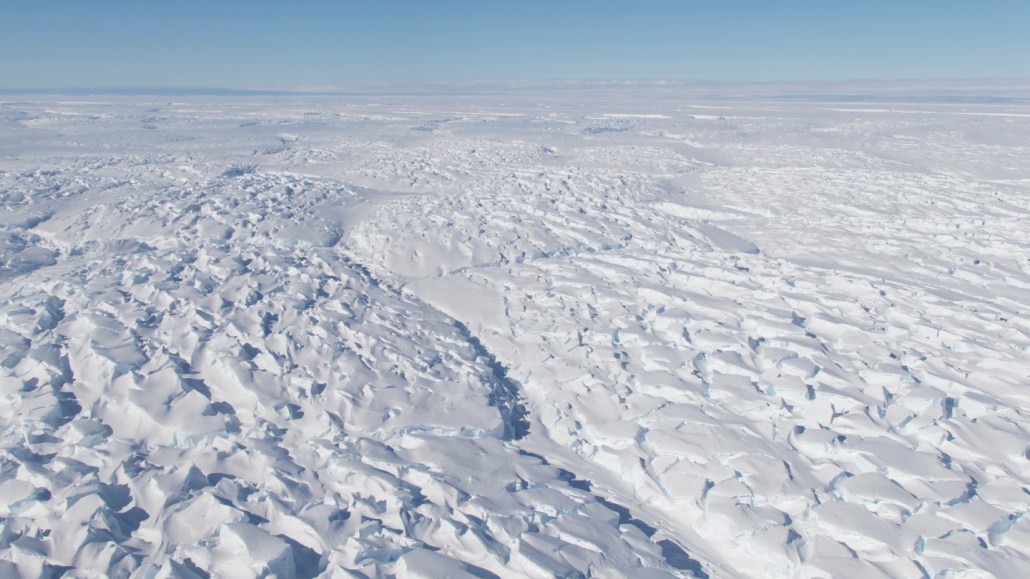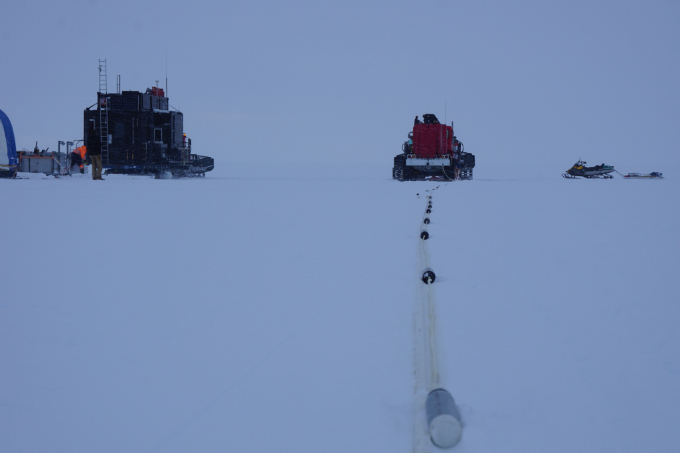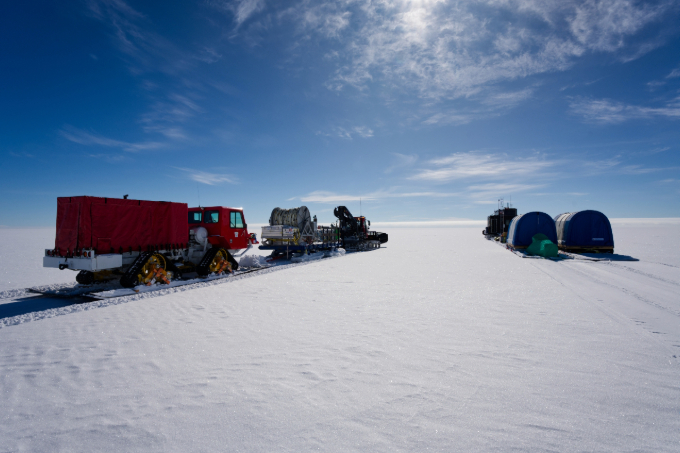
Antarctica’s Thwaites Glacier (pictured) is melting and currently contributing about 4 percent of global sea level rise.
Ted Scambos/University of Colorado
SAN FRANCISCO — Most of the news regarding the Thwaites Glacier, a Florida-sized slab of ice that is melting and currently contributing about 4 percent of global sea level rise, is bad. But a bit of good news may have emerged.
A seismic survey of the bed beneath an upstream section of Thwaites has revealed rough high-rises of earth under the Antarctic glacier, which are comparable in height to the Manhattan skyline, glaciologist Coen Hofstede reported December 12 at a news conference during the American Geophysical Union fall meeting. These rugged rises may be snagging the glacier’s underbelly, slowing its flow toward the ocean and mitigating global sea level rise.
Glaciers flow somewhat like rivers, but much slower. Where Thwaites outlets into the ocean, it connects to a floating shelf of ice that braces and partially restrains the glacier. That ice shelf was once pinned upon an underwater mountain, which helped stabilize it (SN: 12/13/21). But now the shelf is so deteriorated that it’s basically unhitched, Erin Pettit, a glaciologist at Oregon State University in Corvallis, said at the news event.
Fortunately, though, the glacier “is not going to suddenly flow off land,” thanks partly to what’s been discovered upstream, said Pettit, who was not involved in the discovery.

More than 70 kilometers inland from Thwaites’ ice shelf, Hofstede and his colleagues conducted a seismic survey to probe the glacier’s underbelly. The team attached a 1.5-kilometer-long daisy-chain of seismometers to a vehicle equipped with a vibrating plate. Then they drove a roughly 200-kilometer-long stretch of the glacier, using the plate to generate seismic waves and the seismometers to record the waves’ reflectance off layers of ice and earth below. “It’s almost like radar,” said Hofstede, of the Alfred Wegener Institute Helmholtz Center for Polar and Marine Research in Bremerhaven, Germany.

The seismic waves revealed rises under Thwaites that are 10 to 20 kilometers long and toothed with blocks of sediment. These blocks stood up to 100 meters tall above the rises and stretched for up to several kilometers horizontally.
The data showed that the upstream faces of these blocks appear to be under greater pressure than their downstream sides, and that there might be layers of deformed ice within the glacier above the rises. Hofstede hypothesizes that the rises and blocks are slowing Thwaites’ flow as its ice presses against them.
Using computers to simulate the flow of Thwaites glacier shows that “it gets hung up on tall features,” said glaciologist Ben Smith of the University of Washington in Seattle, who was not involved in the work.
The rises are probably related to a rift system, an area where tectonic forces have pulled the ground apart, Hofstede said. Under Thwaites, these rifts run roughly perpendicular to the glacier’s ice flow, sort of like speed bumps on a street.
The findings will allow for more nuanced simulations of the glacier’s evolution, Hofstede said, which are crucial for understanding rates of sea level rise.






